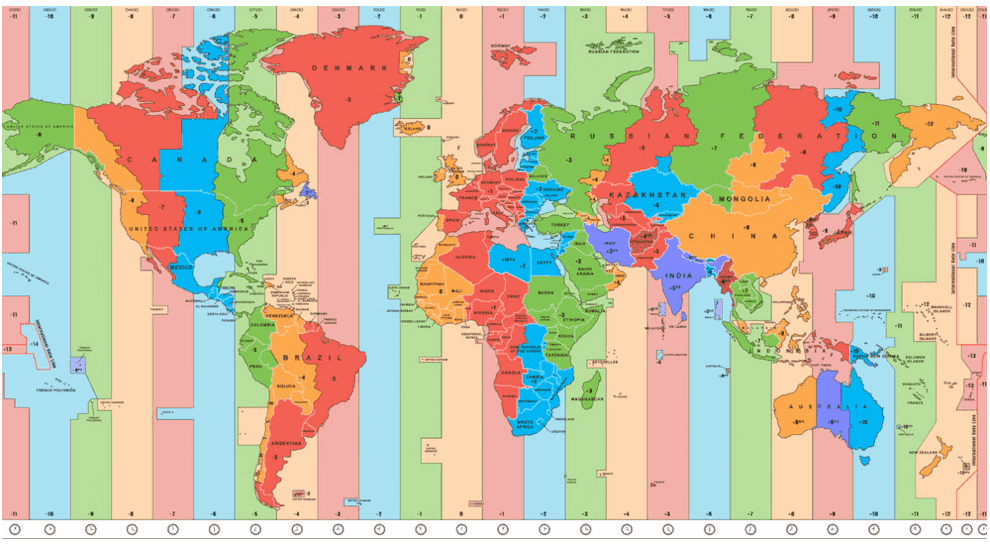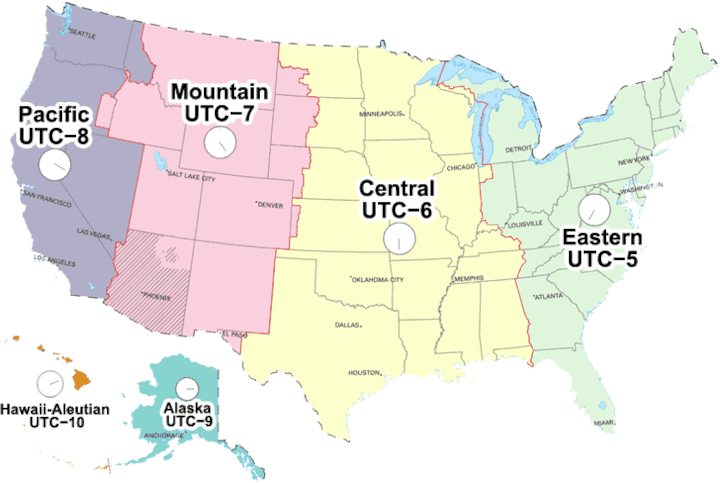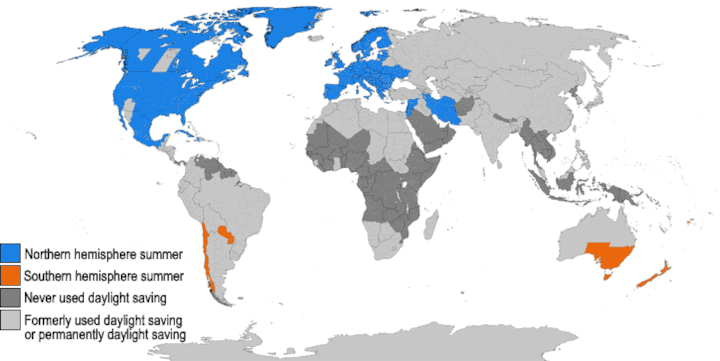Time Zone Converter
Time Zone ConverterCompare the local time of two time zones, countries or cities of the world |  |
What is Time Zone
A time zone is a region on Earth that follows a uniform time, often based on country borders or lines of longitude. Greenwich Mean Time (GMT) represents the average solar time, measured at the Royal Observatory in Greenwich, London, situated at a longitude of zero degrees. While GMT and Coordinated Universal Time (UTC) represent the same time, GMT is a time zone, and UTC is a time standard used globally for civil time and time zones. GMT, formerly a time standard, is now primarily the time zone for certain African and Western European countries. The current standard, UTC, relies on precise atomic clocks and the Earth's rotation. UTC does not change with daylight saving time (DST), although some countries, like the UK, switch time zones during DST, using British Summer Time in the summer.
Most land-based time zones are offsets from UTC, which divides time into days, hours, minutes, and seconds, typically following the Gregorian calendar. Time zones are generally defined as + or - an integer number of hours relative to UTC, such as UTC-05:00 or UTC+08:00, with offsets ranging from UTC-12:00 to UTC+14:00. While the offset is usually by an hour, it can sometimes be by half-hour or quarter-hour, as seen in UTC+06:30 and UTC+12:45.
World Time Zone Map
Time zones around the world differ and used to vary even more than they do today. It wasn't until 1929 that most countries adopted hourly time zones. Nepal, the last to do so, didn't standardize its offset from UTC until 1956, choosing the uncommon offset of UTC+5:45.
Typically, a 1-hour time change corresponds to every 15° change in longitude, but this is not always true. For instance, China and India each use a single time zone despite spanning areas much more significant than 15° of longitude. Conversely, Russia is divided into 11 time zones, though it was once reduced to 9. While there is a general global standard for defining time zones, the specifics can vary significantly by country and are subject to change. The standard time zones around the world are displayed on the map that follows:

U.S. Time Zone Map
Many countries operate in more than one time zone. As a general guideline, every 15° of longitude corresponds to a 1-hour time difference.
There are nine time zones in the U.S., including Eastern, Cenof, mountain, and Pacific Time Zones, the contiguous United States.
- Eastern Time Zone (ET): UTC-05:00 – includes 22 states in the eastern part of the contiguous United States, as well as parts of Canada, Mexico, Panama, and the Caribbean islands.
- Central Time Zone (CT): UTC-06:00 – covers parts of Canada, the U.S., Mexico, Central America, some Caribbean islands, and parts of the Eastern Pacific Ocean. Nine states are entirely within this zone, while eleven others share it with the Mountain or Eastern Time Zones.
- Mountain Time Zone (MT): UTC-07:00 – spans parts of Canada, Mexico, and the U.S. Five states are entirely within this zone, while ten others share it with the Pacific or Central Time Zones.
- Pacific Time Zone (PT): UTC-08:00 – includes parts of Canada, the western U.S., and western Mexico. California and Washington are entirely within this zone, while three other states are split between the Pacific and Mountain Time Zones. Alaska is divided between the Pacific and Alaska Time Zones.
The remaining U.S. time zones are Atlantic, Alaska, Hawaii-Aleutian, Samoa, and Chamorro, covering Alaska, Hawaii, and other U.S. territories.
All these time zones have standard offsets from UTC, ranging from UTC-04:00 to UTC+10:00. Some also observe daylight saving time (DST), shifting their offset one hour closer to UTC during this period. The Atlantic, Samoa, and Chamorro Time Zones do not observe DST.

Daylight Saving Time
Many countries and regions, mainly Europe and North America, observe daylight saving time (DST), known as summer time, to conserve energy. Clocks are shifted by one hour in the spring and one hour in the fall as part of this tradition. Adjusting the time according to the seasons helps align working hours more closely with sunrise and sunset. However, this is less applicable in high-altitude areas, where the variation in daylight is less affected by time changes, and in locations near the equator, where daylight duration remains relatively constant throughout the year.
